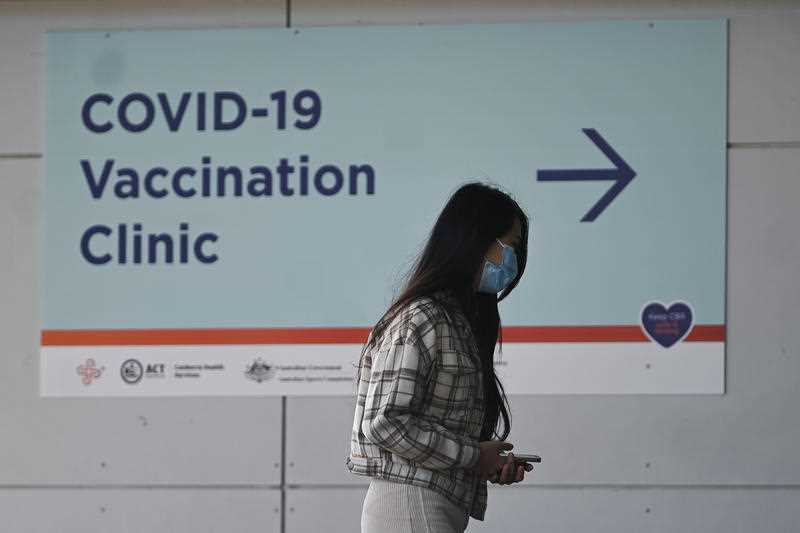The ACT has recorded 13 new cases overnight, eight are linked, all as close household contacts, while five remain under early investigation.
Just five of the 13 new cases were in quarantine for entire infectious period; the remaining eight all spent part of their infectious period in the community.
The number in hospital with or due to COVID-19 has dropped to seven, with only one now in intensive care requiring ventilation.
Of the seven hospitalised cases, two are fully vaccinated, one has received a dose, three are unvaccinated and one is unknown.
The youngest in hospital now is 56 with the oldest in their 70s.
There are over 50 cases with unknown sources of transmission recorded throughout this outbreak.
The number of total cases associated with the outbreak now stands at 541. Twenty-two people have recovered overnight, bringing the total number of recovered cases to 298.
There are now 243 active cases.
Over 4,000 doses were administered in ACT Government clinics yesterday; 61 per cent first doses, 39 per cent second doses.
Today, 75 per cent of the population aged 12 and over have had at least one dose of vaccine, around 185,000 Canberrans.
More than half the ACT population aged 12 and up are double vaccinated.
70,000 people still waiting on first dose through ACT Government clinics. Tens of thousands more will receive a vaccine through primary health givers.
Chief Minister Andrew Barr said soon the ACT will have administered first doses to everyone who wants one.
“Then the balance of the vaccination program will shift to second doses, and it will significant pick up pace,” he said.
Mr Barr said vaccination is the “main pathway” to move safely beyond out current situation.
from Monday next week vaccination bookings will be taken for 12-15-year-olds.
Further detail on roadmap ‘as we get closer to thresholds’
The Chief Minister today said he expects restrictions to gradually change as vaccination targets are met in October and November with the caveat that they may need to be adjusted to respond to increased risk.
“it is our intention … to provide further detail as we get closer to those thresholds,” he said.
The unanimously agreed upon national plan, signed off on by national cabinet, has triggers relating to the Australian average and each jurisdiction’s local vaccination rates, Mr Barr noted.
“They are the two key triggers that are necessary,” he said. “I don’t know exactly when those thresholds will be crossed.”
The Australian average will be very heavily determined by NSW and Victoria, and then Queensland, given the proportion of the nation’s population living in those states.
Yesterday’s Canberra Recovery Plan, a one-page document broadly outlines the already widely reported phases of the Doherty Institute model with some mention of what will be considered when the thresholds are met without any specifics.
Mr Barr, however, today reiterated that the transition out of lockdown will mirror what the Territory experienced last year, and will include modest adjustments to home visitation numbers, gathering sizes, density limits within venues, and increased ourdoor activity.
Larger events and gatherings may remain restricted for longer.
Given the strong take up across the community, Mr Barr said he doesn’t anticipate proof of vaccination will be required to access public or private services in the ACT once restrictions ease.
“This is one of the toughest moments in our city’s history,” he said. “There will be better times ahead for Canberra, our vaccination milestones are in sight.”
Additional financial support for local businesses hard hit by the lockdowns including tourism, hospitality, arts is due to be announced shortly, and a package for the community sector will be announced tomorrow.
Get all the latest Canberra news, sport, entertainment, lifestyle, competitions and more delivered straight to your inbox with the Canberra Daily Daily Newsletter. Sign up here.



